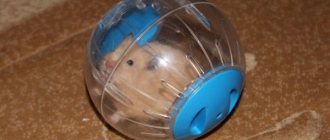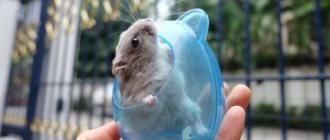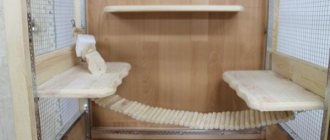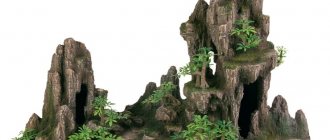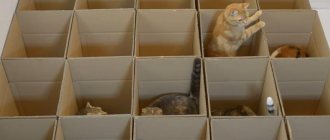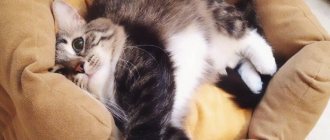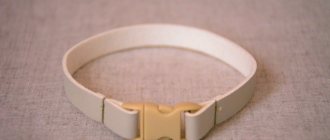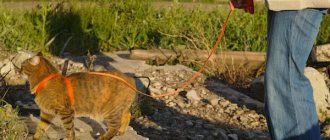What are they?
Drinkers that are used for hamsters at home can be internal or external. They differ in the method of attachment, that is, they can be located inside or outside the cage. In the second case, it turns out to save space inside the pet’s habitat, this is especially true when the home is not too large.
There are many factors to consider when selecting. This is primarily size, convenience, reliability, and method of fastening.
You should also pay attention to stability, safety for the pet, as well as the aesthetic appearance of the structure.
You can also classify devices by design type. They can be suspended or floor-mounted.
As for floor options, they are placed inside the cage. The bowl should have enough weight so that a mobile pet cannot turn it over.
However, it is necessary to take into account the following: since water is in the public domain, it becomes contaminated quite quickly, and it is still possible to accidentally knock it over.
Hanging structures can be secured inside or outside the cage. The container can be open, but closed options are still the most popular. There are vacuum designs that include a container standing on a wide tray with high sides, from which water flows. Not everyone likes this option, since the liquid gets dirty quite quickly and you need to wash the entire device to clean it. Since such drinkers are most often made of soft materials (like plastic), hamsters often chew them.
Nipple drinkers for pets include a flask from which water flows through a tube ending with a locking mechanism. The hamster gets liquid by pressing its tongue on the latch, and the animal will have to get used to this. There are also ball mechanisms that operate in a similar way to the previous one.
Such options are used especially often, because the water remains clean and does not spill throughout the cage.
Some owners choose bottle drinkers with a reservoir. Water slowly flows out of the container into a small depression. These drinkers are most often used by bird owners, but hamsters can also use them. However, with this choice, you need to take into account that the water will also be open and the structure will have to be washed and cleaned frequently.
Walking ball for rat
In specialized stores offering everything for rats, the seller often recommends that owners of their tailed pets purchase a walking ball. The sellers assure that with such an accessory the animal will be able to roam freely around the apartment without damaging surrounding objects.
But, most rats do not show any desire to run around in a walking ball, and some rodents even experience panic when trying to place them in this accessory.
The fact is that, unlike other rodents, inquisitive rats need not only to move, but to get acquainted with their surroundings, sniff different things and even taste them. And, moving in a ball, the pet will not be able to satisfy its curiosity, as a result of which the animals quickly lose interest in it.
We should also not forget that decorative rats are afraid of confined spaces. If you lock an animal in a tight ball, the animal will decide that it is trapped and will try to get out of there in any way. Therefore, it is strictly forbidden to force a tailed pet into a walking ball, in the hope that over time it will get used to this method of movement, as this will cause severe fright in the animal and cause stress.
If the owner nevertheless decides to purchase such an accessory for a small pet, then it should be remembered that the rat ball must have small holes for air access so that the animal does not suffocate.
If you want to make your pet's life more fun, use the tips and tricks from our material on homemade toys and entertainment.
How to do it yourself?
If you can’t buy a drinking bowl in a store, you can try making one yourself at home. This process is absolutely not complicated and does not require any special skills.
In addition, the design will require only available or inexpensive materials. They can be found in almost every home.
To make a sippy cup you will need a knife, a nail or an awl, and a plastic bottle. You also need to prepare a regular pen, a ball that will fit inside it but will not slip out, a spring from a fountain pen, wire for fixing the device, electrical tape, and glue. The procedure will not take too much time. Let's look at 2 options that are especially easy to do on your own.
In order to make a nipple drinker, you will need a small plastic bottle, a ballpoint pen and a ball. The ball must be selected so that it fits freely inside the body of the handle, but does not roll out of its narrowed part.
The place where it gets stuck is carefully cut off with a sharp knife so that the ball sticks out a little, but does not have the opportunity to roll out completely.
You can secure the ball with a pen spring, but not too tightly.
A small hole is made in the bottle into which the handle is firmly inserted. The convergence point should be secured with electrical tape or glue to prevent liquid leakage. After this, the structure is secured with wire to the cage so that the tube is located below and at a height convenient for the hamster.
For the second design option, you will need a plastic bottle and a drinking straw, which is inserted into a hole made in the center of the lid, with the corrugation outward. The inside needs to be cut off. We protect the structure from water leakage using glue or electrical tape. The bottle is attached to the cage with the straw down, liquid will flow through it.
Why doesn't the animal drink water?
The reasons why a hamster refuses to drink water from a drinking bowl can be varied. If the animal has recently appeared in the family, its stressful state cannot be ruled out. In this case, there is no need to rush things - let him get comfortable and get used to the new living conditions.
Another factor is the inability to use the drinking bowl. We have already discussed above what to do in this situation.
It is quite possible that the animal has quite succulent food, which satisfies its need for liquid for some time.
We must not forget that hamsters are nocturnal animals. This means that the peak of their activity may occur at a time when household members are already sleeping. Accordingly, the animal quite possibly uses the drinking bowl, it just does it when no one is looking.
And finally, you need to take into account that the animal needs fresh water, which is recommended to be changed daily . The hamster will not drink stagnant water. It is also necessary to occasionally check how well the drinking bowl is functioning and whether there are any technical faults.
It should also be noted that newborn animals need, just like adults, to receive fresh water.
However, they cannot immediately reach an adult drinking bowl, so it is worth taking care of a small saucer of water from which the kids can drink on their own.
In this case, it is best to rinse the saucer several times a day and renew the liquid.
How healthy a pet will grow up depends entirely on its owners. Therefore, having decided to take such an important step as getting a pet, you need to give it maximum attention and provide competent care. Only in this case will the hamster be active, friendly, develop properly and delight its owners.
See below for a video review of drinking bowls for rodents.
If you want to get a hamster, be prepared to purchase all the necessary accessories for it. These necessarily include a drinking bowl. Choosing one is not easy, because the range of pet products today is very large. Let's consider which water bowl for a hamster is more reliable and will definitely not cause harm to the health of your pet.
What are there
All drinkers can be divided into two main types: external and internal. External ones are mounted on the outside of the cage; they are suitable for small cages as they do not take up useful space. The internal ones are attached inside the cage.
- floor - placed in a cage directly on the floor or stand. This can be any deep bowl, preferably heavy so that the hamster does not knock it over. The main disadvantage of this design is the rapid contamination of water and the unstable design; you will have to frequently clean the cage and change the water;
- hanging - attached to the cage. It can be an open drinker in the form of a deep container with a fastener, but most often hanging drinkers are made closed;
- vacuum - consist of a narrow container for water and a wide tray with high sides, they are made of plastic or silicone. Water from the container slowly flows into the pan. The disadvantage of this design is that the water in the pan becomes dirty and must be washed periodically. A hamster can also chew through light plastic or silicone;
- nipple - consist of a flask with water and a tube with a locking mechanism on a spring. The water is in a closed container and is supplied through a narrow tube only when the animal’s tongue presses the locking mechanism. Disadvantage - you need to teach the hamster to use the drinking bowl;
- ball - the design is the same as nipple, only they do not have a spring lock, water flows when you press the ball, according to the operating principle of a simple washstand;
- bottled with a water tank , from which water slowly flows out through a small hole and accumulates in a special tank. Over time, the water in the tank becomes dirty and must be washed frequently.
Floor-standing
Floor-mounted ones in the form of a deep bowl are the simplest, they are easy to clean, but you need to frequently change the water and clean the cage. It is advisable to use heavy ceramic or metal containers; the hamster easily knocks over plastic ones and can chew through them. You can place a bowl of water on a heavy stand.
Some models of bottle and nipple drinkers are placed on a special stand on the floor inside the cage. Original shapes and bright colors of stands can decorate a hamster’s home.
Hanging
There are a lot of hanging devices for a hamster, depending on the method of attachment and the materials used. You can hang the drinking bowls by the edge or by individual elements of the cage or container, inside or outside, it all depends on what kind of cage - made of vertical or horizontal rods, glass, etc. Such models are stylish and compact, they save space in the cage, and are reliable and do not require constant monitoring.
Newbie question about the design of a ball drinker
Newbie question about the design of a ball drinker ¶
From: sandy - June 15, 2004 11:44 pm
We have a 2-month-old pig, and when we bought it, we were told that she knows how to drink from a water bottle. We bought her a drinking bowl with a ball from a pet store. I poured water into it and it started leaking a lot. Then I added water to the top (I read in the instructions that the drinking bowl should be full), it stopped leaking, but when I pressed the ball, water did not drip from it, only if I sucked in the water (I tested it on myself). And water also drips if you press the drinking bowl, but you won’t be pressing constantly, will you? Although our pig sometimes runs up to the drinking bowl and drinks (though only for a couple of seconds). I still can’t understand - do pigs know how to suck up water from a drinking bowl, or should it still flow when you press the ball, and our drinking bowl is wrong? Please clarify!
Newbie question about the design of a ball drinker ¶
From: shlomo - June 16, 2004 1:30 am
With a good drinking bowl, when pressed onto the ball, water begins to ooze out. Rodents either lick the water by turning the ball, or press it with their incisors, whichever is more convenient for you.
Newbie question about the design of a ball drinker ¶
From: sandy - June 16, 2004 1:43 am
Strange. Maybe it's defective? Or am I just pressing the ball incorrectly? Should it ooze or drip?
Newbie question about the design of a ball drinker ¶
From: 96038314 - June 16, 2004 1:57
Linda: Rather, drip. One of my drinking bowls is leaking too. I put it on, and then I press the ball several times frequently and the water stops flowing.
Newbie question about the design of a ball drinker ¶
From: sandy - June 16, 2004 2:27 am
How to make a water bowl for a hamster with your own hands
If you wish, you can make your own drinking bowl from scrap materials. To work, you will need the simplest tools and cheap materials that can be found in every home; you don’t need to buy anything.
- sharp knife or hacksaw for metal;
- awl or hammer and nail;
- marker;
- small plastic bottle;
- ballpoint pen;
- a metal ball with a diameter slightly smaller than the body of the pen;
- a spring from a fountain pen;
- rope or wire;
- electrical tape or glue.
Let's look at the instructions on how to make two types of automatic drinkers with your own hands in just a few minutes.
Nipple from a fountain pen
The easiest way to make a nipple drinker is from a plastic bottle, the body of a ballpoint pen and a ball bearing.
Manufacturing instructions:
- With the handle body in a vertical position, lower the ball inward from the wide side. The ball should pass freely in the wide part of the body and get stuck in the narrow part.
- Mark the place where the ball is stuck with a marker and cut off the unnecessary part of the cone. The ball should protrude slightly from the body, but not fall out.
- Lightly press the ball using a spring from a fountain pen, which can be secured with a lollipop stick or a wooden wedge. The ball should cover the hole, but at the same time be quite easy to press with the hamster's tongue.
- We make a hole in the plastic bottle at the bottom or side under the tube from the handle body, so that the tube fits as tightly as possible and water does not leak.
- Insert the tube into the hole in the bottle. We seal the joint with glue or wrap it with electrical tape.
- We hang the drinking bowl in the cage with the tube down using a rope or wire at such a height that the animal can freely reach the edge of the tube.
How to install (attach) a drinking bowl for a hamster
Let's look at the five simplest and most accessible ways to attach a drinking bowl.
- If you have a drinking bowl with a hole in the lid for fastening, then just make a double-sided hook from a piece of wire. On one side we make a larger loop for attaching to the edge of a cage or container, and on the other side we attach a drinking bowl to a small loop.
- If the drinking bowl comes with a mount for the cage, then a large office clip will help to attach it to the container. We take out one wire and make a loop of the same shape, but larger, from a long piece of wire. We hook the drinking bowl mount to the loop we made. We attach the clamp to the edge of the container. We insert a new wire into the clamp along with the drinking bowl.
- We make a stand for the automatic drinker from a large, thick plastic cup. The diameter of the bottom of the cup should be slightly larger than the diameter of the automatic drinker. Turn the glass over and place the drinking bowl in the center. Mark the outline of the hole for the automatic drinker at the bottom of the cup with a marker and cut it along the marked line. On the side of the cup we mark and make a hole for the straw at the desired height. We insert the automatic drinker into the made stand and place it in the container.
- You will need a plastic bottle with a slightly larger diameter than the drinking bowl. Cut off the bottom of the bottle and part of the side so that it can be installed in the bottle. We make a small hole on the edge of the bottle for attaching the wire and a small hole in the bottom for the tube. We place the drinking bowl in the bottle and attach it to a wire hook, hanging it in the container.
- We make a stand from a toilet paper or paper towel roll. Using a marker, mark the contours on the side of the sleeve and mark the hole for attaching the wire, and cut it out. To place the drinker, cut a small semicircle at the bottom of the sleeve for the spout of the drinker. We insert the drinker into the stand, thread the wire through the hole and hang it over the edge of the container.
How to teach a hamster to drink from a water bowl
It is recommended to install a drinking bowl in advance when preparing a home for a hamster, then the hamster, while exploring the new house, will be able to independently learn to drink water from the device. If you purchased a drinking bowl later, it is important to teach the animal to drink from it.
Not all hamsters know how to use new accessories, but that's okay, they will learn quickly. You can bring the animal up and carefully poke its nose into the drinking tube. But it’s best to use a little trick - smear the tip of the tube with juicy and aromatic food, a pear, an apple or a cucumber. The smell will attract the hamster, instinct will work, and he will learn to drink.
Clothes for rats
Some famous fashion designers have repeatedly presented their collections of fashionable clothing for cats and dogs. And American designer of animal outfits Ada Nieves decided to surprise the public and created a unique collection of outfits for rodents. Clothes for rats aroused great interest among lovers of these animals and many owners were ready to pay a considerable amount for a suit or dress for their beloved pet.
The Ada Nieves collection included:
- fluffy and bright skirts for tailed female fashionistas;
- luxurious evening dresses embroidered with feathers and Swarovski crystals;
- tailcoats and tuxedos for males;
- colorful vests with harnesses and leashes;
- warm suits for rats, designed for walking in the cold season;
- wedding dresses for the marriage ceremony.
Clothes for pet rodents are just gaining popularity, but the enterprising American is confident that her innovation will be an unprecedented success, and soon most owners will be happy to dress their little pets in a variety of outfits.
Products for rats will help diversify the life of a rodent and make his home cozy and comfortable. But before you offer your animal a new toy or accessory for exercise, you need to make sure that these things are safe and harmless to the animal.
Types of drinking bowls
Nipple
The most common and convenient sippy cup for hamsters and other rodents. It is a small container of water with a tube coming out of it. Inside it is a special ball on a spring - a nipple.
The structure is suspended from the bars of the cage. When the animal is thirsty, it approaches the drinking bowl and presses the ball with its tongue, after which a small portion of water enters its mouth.
- Space saving.
- Ease of use.
- Safety.
- Purity.
- Often there is a marriage.
- Not every animal is trained.
If you can’t go to the store or want to save money, make a sippy cup yourself.
For the nipple drinker we need:
- Plastic bottle with a capacity of up to 500 ml.
- The body of a plastic pen (preferably transparent).
- Metal ball from a bearing.
- Waterproof glue.
- Wire, rope, thread for hanging.
Drinkers with a “pocket”, often used when keeping birds
This sippy cup consists of a container of water and a lid with a “pocket” spout. The animal only has access to water in the “pocket”; the rest of the supply always remains clean. This drinking bowl costs on average from 70 to 150 rubles. depending on manufacturer and volume. The advantage of this choice, in addition to being more hygienic compared to a bowl, is the ease of use and reliability of the design.
If your animal can’t get used to automatic sippy cups, and you don’t want to change the water in the bowl three times a day, a sippy cup with a pocket can be a real lifesaver for your hamster, because it’s as easy to use as a regular bowl, but it will spill some liquid. it is much more complicated.
Among the disadvantages is the same probability of being thrown with sawdust. If the “pocket” is filled with them, the animals will be left without access to drinking water. Cleaning such a drinking bowl from mold or other contaminants is almost as easy as a regular bowl, because it disassembles into easy-to-clean parts.
How to attach to the cage?
How to install, attach or hang a water bowl for a hamster is an important question that faces inexperienced hamster owners.
The fasteners for the sippy cup are:
- A wire or rope that is attached to the bar of a cage.
- A spring with hooks that encircles the drinker, thereby fixing it against the wall of the cage.
- Fastener between the bars of the cage. In order to use it correctly, you need to select fasteners according to the type of arrangement of the rods : vertical, horizontal.
- The suction cup is suitable for enclosures with plastic or glass walls.
Floor drinking bowls cost less than 20 - 200 rubles, depending on the material. It is better to choose a cup made of stainless steel or ceramic, as plastic is easily chewed.
You should not put your hamster in a deep bowl; he may fall into it, choke, or even drown!
How to accustom a rodent to a drinking bowl?
Not all rodents immediately know how to use a drinking bowl. First of all, they watch the mother hamster and only after her begin to drink from the tank. If your hamster hasn’t had a drip cup since childhood, it doesn’t matter, he’s easy to tame .
So, how to accustom a hamster to a drinking bowl? To do this, you need to wet your finger in water and let the animal lick it so that it can taste the water. After this, it is better to push the hamster to the drinking bowl and let him understand how the drinking bowl works, that the liquid comes from there. A few repetitions and you will teach your hamster to drink from the device.
A drinking bowl, clothes, a carrier and a ball for a rat - do rodents need such accessories?
Pet store shelves offer all kinds of products for rodents, ranging from necessary attributes such as cages, feeders and waterers to items that are designed to make keeping a pet comfortable and cozy, such as houses, hammocks and even clothing. What accessories for rats would be appropriate in your pet’s cage, and which ones should you avoid purchasing?
Alternative to a sippy cup
If it is not possible to satisfy the animal’s needs (moving, the sippy cup is not ready, etc.), then how can you feed a hamster without a drinking bowl? Water can be replaced with succulent food, vegetables and fruits that contain a lot of moisture . Cucumbers, which are very loved by hamsters, cope well with this task.
The drinking bowl must first of all satisfy the rodent's need for fresh drinking water, and its aesthetic function is a secondary matter. The main thing is to regularly maintain cleanliness and ensure that the drinking bowl is full .
Rat carrier
Sometimes there is a need to transport a pet, for example, you need to take the animal to the veterinarian, visit an exhibition with it, or simply take it with you to the dacha. For such cases, it is advisable to purchase a special carrier to make the animal’s trip as comfortable and convenient as possible.
Rat carriers are a container made of opaque plastic with a hinged lid. There are longitudinal ventilation holes on the sides of the container or on the lid to supply oxygen. Some carriers are equipped with a feeder so that the rodent can have a snack on the go.
When choosing a rat carrier, you should remember:
- this accessory should be roomy and spacious, especially if it is planned to transport several pets at once;
- It is advisable to give preference to a carrier with side slots for ventilation, since air circulates better in them and you won’t have to worry about the rat suffocating;
- the container must be made of durable and hard plastic so that the animal cannot gnaw a hole in it and escape;
- transportation for a rat is always stressful and the animal begins to defecate frequently out of fear, so the bottom of the carrier should not be covered with cloth or paper so that the pet does not sit on a damp bedding;
- when transporting a rodent in the cold season, the carrier must be placed in a fabric bag, since rats can easily catch a cold;
Important: you cannot use a cardboard box to transport the animal. In such a homemade carrier, the animal can not only gnaw a hole, but also suffocate from lack of oxygen.
